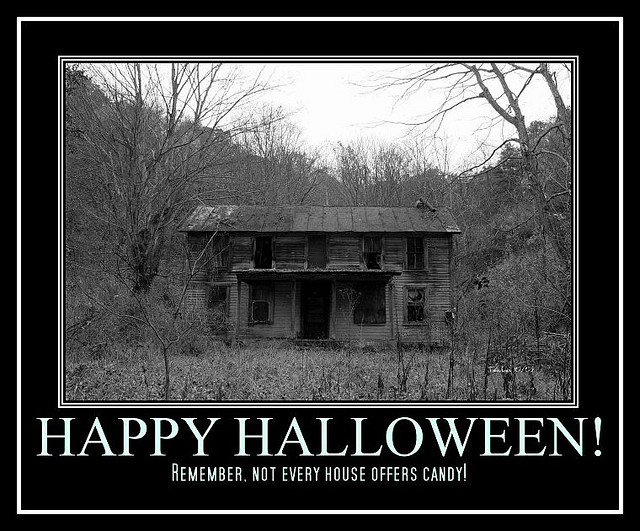NC in Focus: Trick or Treat
“Straddling the line between fall and winter, plenty and paucity, life and death, Halloween is a time of celebration and superstition. It is thought to have originated with the ancient Celtic festival of Samhain, when people would light bonfires and wear costumes to ward off roaming ghosts. In the eighth century, Pope Gregory III designated November 1 as a time to honor all saints and martyrs; the holiday, All Saints’ Day, incorporated some of the traditions of Samhain. The evening before was known as All Hallows’ Eve and later Halloween. Over time, Halloween evolved into a secular, community-based event characterized by child-friendly activities such as trick-or-treating. In a number of countries around the world, as the days grow shorter and the nights get colder, people continue to usher in the winter season with gatherings, costumes and sweet treats.” – History of Halloween, The History Channel
1.3 million
The estimated number of potential trick-or-treaters—children between the ages of 5 to 14—in North Carolina according to the U.S. Census Bureau’s 2013 Population Estimates. Another 612,000 children under the age of 5 and 378,000 teenagers between the ages of 15 and 17 are potential trick-or-treaters.
Within the state, Wake County has the largest number of possible trick-or-treaters: 142,000 children between the ages of 5 to 14. Mecklenburg is a close second with 138,000 children 5 to 14. At the other extreme, Tyrrell County has fewer than 450 likely trick-or-treaters.
While there are no reliable sources for baseline estimates of North Carolina’s witches, vampires, and werewolves, we are confident that these populations will see exponential growth on October 31st, followed by an equally rapid decline.

Image Source: Flickr user gb_packards
3.8 million
The number of occupied housing units in North Carolina where trick-or-treaters might stop according to the 2013 American Community Survey (ACS). Mecklenburg (377,000) and Wake (365,000) have the largest number of occupied units, followed by Guilford (200,000), Forsyth (143,000), and Cumberland (126,000). Union County has the highest share of housing units that are occupied (93.5%), followed by Wake (93%), Orange (92.5%), Durham (92%), and Mecklenburg (91.9%).
Trick-or-treaters near coastal or mountain vacation regions might be disappointed by many unoccupied units. According to the 2008-2012 ACS, only 45% of Dare County’s housing units were occupied, the lowest occupancy rate in the state. The next lowest occupancy rates were Avery (52%) and Graham (58%) counties in western North Carolina. Coastal Carteret County had the fourth lowest occupancy rate: 59%.
22
The number of North Carolina manufacturing establishments that produced chocolate or chocolate confectionary. In 2012, they employed more than 120 workers and paid over $2 million in wages.
13
The number of North Carolina manufacturing establishments that produced nonchocolate confectionary (candy corn, anyone?). In 2012, these manufacturers employed 284 paid workers and paid $9.8 million in annual wages.
Happy Halloween to everyone!
Inspired by the U.S. Census Bureau News Facts for Features: Halloween.
Your support is critical to our mission of measuring, understanding, and predicting population change and its impact. Donate to Carolina Demography today.